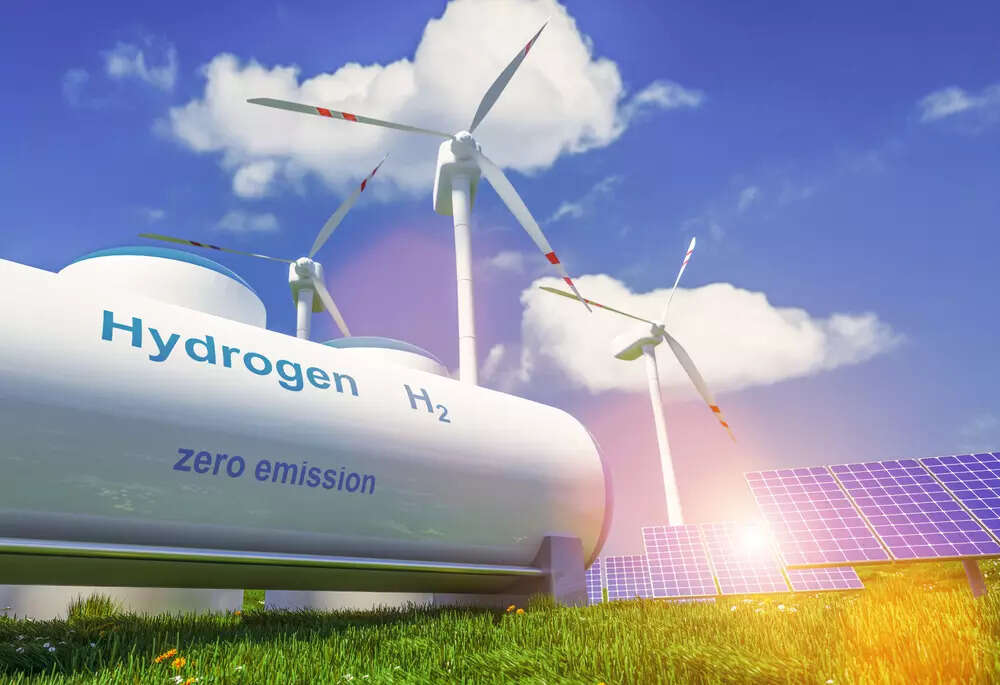
India emitted ~2.88 Billion Metric Tonnes of CO2 in 2021 and has committed to cut total projected carbon emissions by 1 billion tonnes by 2030 and reducing carbon intensity of nation’s economy to less than 45 per cent by 2030 from 2005 levels. Apart from that, we have also committed to be net carbon zero by 2070. In order to achieve this reduction in carbon intensity, there will be increased emphasis on green hydrogen. Added to this is the fact that India’s crude oil import has been increasing at a CAGR ~11 per cent over the last two decades with crude recently breaching the USD 100 per barrel mark due to the Russia – Ukraine conflict, there is also economic sense in moving towards Green Hydrogen.
While today the production of Green Hydrogen is more expensive than all other forms in the Hydrogen rainbow, there are select pathways that could enable reduction in cost of Green Hydrogen through measures all the way from the renewable electricity sources to the electrolyser, covering the transportation strategy as well as the retailing solutions.
The starting point for future pathways is the source of energy i.e. Renewable Energy which is currently both expensive and limited. Typical costs for Solar PV currently stand at about ~ INR 2.5 per KWh and since it makes up ~ 50 per cent of the cost of production of Green Hydrogen, it forms one of the key levers for cost reduction. Measures ranging from things such as local large scale manufacturing of Solar PV modules as well as Balance of System components, can help reduce overall project cost, while operations and maintenance can be optimized by utilizing new technologies including robotized cleaning of solar modules and utilizing thermographic imaging for fault detection.
The electrolyzer is the next major area of focus for cost reduction. Herein, multiple technology solutions exist, viz. Alkaline, Proton Exchange Membrane (PEM) Electrolysis, Solid Oxide Electrolyser, with Alkaline being the most common in India right now. Herein too, while scale effects and cost reduction on account of industrialization learning curves will take effect, localized large scale manufacturing will hold the key.
Similarly, the compression and storage equipment used in production, which is manufactured for use in other industrial applications too will also see additional scale effects reducing costs on account of large scale production of Green Hydrogen.
On the transportation front, a fine balance between right sizing of plants for achieving the optimum costs will have to be compared to the additional costs of transportation based on the increase in output and consequent increase in radius of areas served by a plant.
The gaseous and liquefied transport solutions will also have to be compared on the scale of retailing stations as well as any intermediary storage being sought. Here too, while liquefied transport maybe more cost effective, the volume transported will be significantly higher than the gaseous fuel. An optimally distributed production footprint serving smaller quantities via gaseous Green Hydrogen transport to radial retail points may help in achieving lower overall cost levels.
The final leg in the value chain, the retailing stations also need a focused cost reduction approach on two fronts i.e., the lower pressure storage and compression which would have commonality across other industrial uses and the high pressure storage which would need aggressive localization to realize cost reduction. Optimal dispersion of retailing points will also be needed to strike a balance between sufficiency of refueling infrastructure as well as
utilization, especially when the vehicle parc is smaller in size.
On the vehicular front, the fuel cell stack capex is expected to see cost reductions along with reductions in the cost of the battery and the onboard storage equipment. While hydrogen fuel cell technology for vehicles is well established, a key determinant of hydrogen’s uptake in the consumer market will depend on how it competes on a total cost of ownership basis with other fuels, especially with battery-only solutions. Hydrogen’s rapid refueling time and high energy density make it inherently suitable for freight and heavy duty passenger transport, for example trucks and buses.
However, capturing these markets will require products, with strong competitiveness and ability to operate effectively in Indian conditions. Despite these, there will still be many additional steps needed by the Government both State and Central (over and above the current policy) to enable reduction of the electricity required
for production of Green Hydrogen as well as incentives for both vehicles as well as the fuel on lines outlined for other green technologies like Battery Electric Vehicles.
If done right, India could reach not just the goals of decarbonization and crude oil reduction but also achieve a pole position to play its part in the Global Green Hydrogen opportunity which is estimated to be approximately USD 500 Bn to USD 600 Bn by 2050 through exports, in addition to playing a role in the manufacturing value chain through electrolyser manufacturing, solar PV, etc.
This article has been authored by Ashim Sharma, Partner & Group Head at NRI Consulting & Solutions
Read More:

